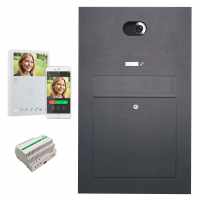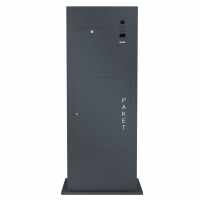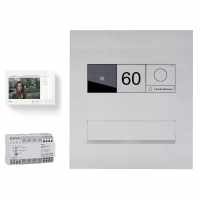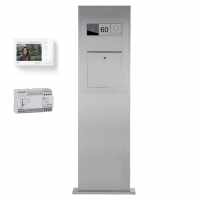It is a real habit that people go to the letterbox every day to check whether mail has arrived. They now also do this digitally. Users check their email inbox to see what letters they have received. Today, it is hard to imagine that things worked quite differently for a long time. Until the 19th century, letter boxes did not cover the whole country.
No one today thinks about how long letterboxes have been around. Their history goes back to the 16th century. In cultural history, the first postal connection between letterboxes was between Leipzig and Breslau and had a length of about 325 kilometres. It had many postal stations along the way and it was the town of Liegnitz that was mentioned as the town with the first letterbox. This was installed in 1633. The postal system as it is today did not exist at that time. However, the beginning had been made. In the course of the centuries, a rapid development set in and it became a matter of course that every household had a letterbox so that the postman could post the items properly and protected from the weather and theft. With this development, the variety of different types of letters soon began to appear.
The origin of the letterbox
Today, when the mail arrives at your door, it is a registered letter or a small package, i.e. something that does not fit into a letterbox or has to be received in person. Once upon a time, this was not so convenient. Letters or other items were given personally to a messenger who delivered them. A postal system as we know it today did not exist for a long time. The first forerunners of the postal system were once the seafarers. They placed letters for their families at home under the stones on their way around the world and hoped that someone would bring them here. In this way, however, many letters were lost or arrived at their destination long after the seafarers themselves had returned home.
In the case of the letterbox, the story of its origin began among the seafarers who deposited the letters when going ashore, so that they could be taken by ships sailing in the opposite direction. In later times, the development of slots in the doors of the post offices led to wooden letter boxes and then to official letter boxes made of iron and then to the letter box as it is known today.
The 17th century is now regarded as the key period for the letterbox we know today
As early as the 16th century in Florence there are said to have been small wooden boxes at the churches in which the citizens could hand in their complaints and notices to the government. Soon messengers were using such boxes to drop mail for the clergy. This was not intended, but the boxes can be compared to a house letter box of today.
The first letterbox was installed in Liegnitz in 1633. Messengers passed through this town on their way from Leipzig to Breslau. The municipality wanted to use this for its own benefit and set up a small box at the Hayn Gate, into which the state employees and citizens dropped their mail so that it could be taken by the postmen. The mail for the city was also deposited in this box. Such a central post box saved the messengers from having to go to the houses. A fee was not necessary, because it had already been agreed many years before that the couriers had to take the letters of the city free of charge.
The spread of letter boxes in Europe began in 1590, and the Hanseatic city of Hamburg had already had a messenger service, but not yet a letter box. It was not until 1641 that the city council had several wooden letterboxes erected. These were so-called directional letterboxes, in which the mail was pre-sorted and then sent to its destination. In 1653, letter boxes were set up in Paris. King Louis the 14th had commissioned them and wanted to establish a real system. Around that time, something like the stamp we know today was created. Parisians had to attach a paper strip, the „billets de port paye“, to the letter so that it could be delivered.
The original idea of Jean-Jacques Renouard de Villayer soon gained widespread acceptance and today the stamp is still affixed to every letter or parcel. However, this system only existed in Paris for about eight years and therefore the first postage stamp, with which the user paid for the transport of a letter when it was posted in the box, was forgotten for years. In the past, a stamp, as it is known today, was not payment for transport in the form of postage, but the recipient of the letter had to pay the fee. It was not until the introduction of house letter boxes, into which the items were posted and the recipient did not have to be at home in person, that the transport was paid for in advance with the stamp.
Today's mailbox: smart home
Even though people today communicate a great deal electronically, it is impossible to imagine life without private letterboxes and postal letterboxes. Business correspondence and mail with offices and authorities, however, is still handled by most people using the familiar postal method with letters. However, a postcard or the classic love letter still finds its way into the letterbox. A large part of the mail is also advertising mail.
When private mailboxes became the norm in households, the desire for a personal item became greater. Not only were some of the post office's letter boxes real ornaments, but the private versions also adorned the house and flat doors. In the meantime, there is no longer a letterbox at every door in most apartment buildings; instead, large house letterboxes are usually fixed or set up in the entrance area with the mailboxes for the families.
Whoever has the option of installing a letterbox just for their own household or fixing it to a wall usually chooses a particularly attractive one. It should also suit the house and the person. There are many different colours and shapes, standing or hanging letterboxes. Many homeowners also like to use a combination of letterbox and newspaper rack. The combination of letterboxes with house numbers, exterior lights and doorbell signs is also particularly popular. In addition, the trend towards a smart home is becoming more and more prevalent, which is also made possible in modern letterboxes with cameras, facial recognition and access via the smart home.

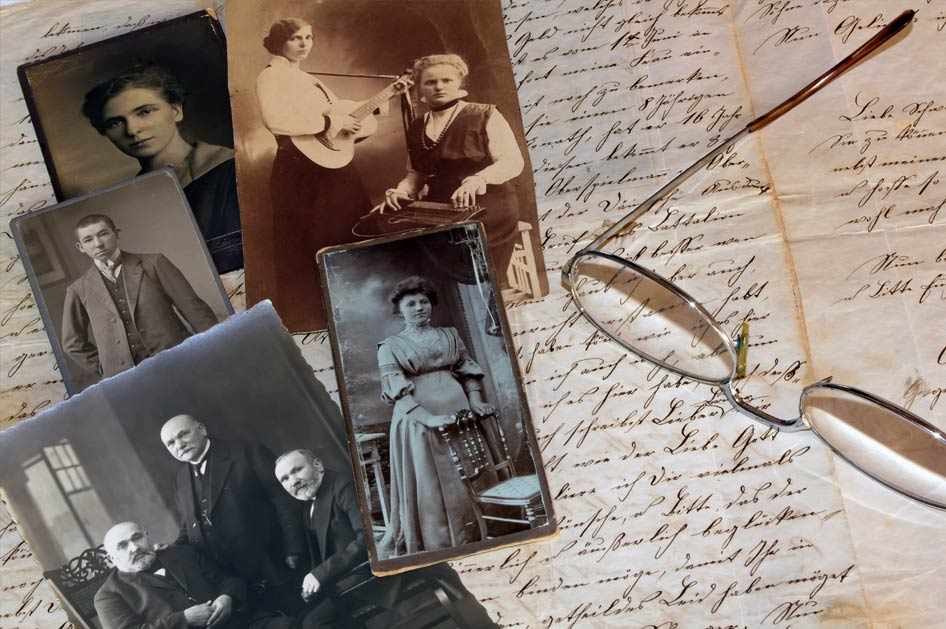
 COLOR SELECTION
COLOR SELECTION
